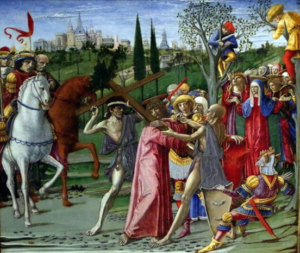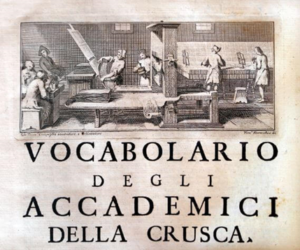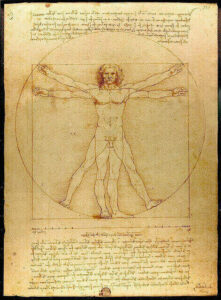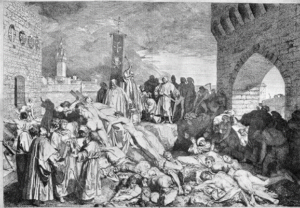What was the Renaissance
Table of Contents
The Renaissance was a cultural and academic movement that emphasized the rediscovery and application of the texts and thought of classical antiquity, which occurred in Europe between the years 1400 and 1600.
When did the Renaissance Start and End
The Renaissance can also refer to the period of European history that spans roughly the same dates. It is increasingly important to note that the Renaissance had a long history of developments that included the 12th century Renaissance and beyond.
Origins and Background of the Renaissance in Europe
The term Middle Ages was coined by scholars in the fifteenth century to designate the interval between the fall of the classical world of Greece and Rome and its rediscovery at the beginning of their own century, a revival in which they felt they were participating. Indeed, the notion of a long period of cultural darkness had been expressed by Petrarch even earlier. The events at the end of the Middle Ages, especially from the twelfth century, set in motion a series of social, political and intellectual transformations that culminated in the Renaissance.
These include the increasing failure of the Roman Catholic Church and the Holy Roman Empire to provide a stable and unifying framework for the organization of spiritual and material life, the rise in importance of city-states and national monarchies, the development of national languages, and the breaking up of old feudal structures.

Origins and Rise of Humanism
While the spirit of the Renaissance eventually took many forms, it was early expressed by the intellectual movement called humanism. Humanism was pioneered by secular men of letters rather than by the learned clerics who had dominated medieval intellectual life and developed scholastic philosophy. Humanism began and reached its goal first in Italy. His predecessors were men like Dante and Petrarch, and his main protagonists included Gianozzo Manetti, Leonardo Bruni, Marsilio Ficino, Giovanni Pico della Mirandola, Lorenzo Valla, and Coluccio Salutati. The fall of Constantinople in 1453 provided a great boost to humanism, as many Eastern scholars fled to Italy, bringing with them important books and manuscripts and a tradition of Greek scholarship.
What is Humanism?

Humanism has several significant characteristics:
• First, he took human nature in all its various manifestations and achievements as his theme.
• Second, he emphasized the unity and compatibility of truth found in all philosophical and theological schools and systems, a doctrine known as syncretism.
• Third, he emphasized the human dignity. Instead of the medieval ideal of a life of penance as the highest and noblest form of human activity, humanists looked to the struggle of creation and the attempt to exert dominion over nature.
• Finally, humanism hoped for the rebirth of a lost human spirit and wisdom. In the course of their effort to recover it, however, the humanists collaborated in the consolidation of a new spiritual and intellectual perspective and in the development of a new body of knowledge.
The effect of humanism was to help free men from the mental restraints imposed by religious orthodoxy, to inspire free inquiry and criticism, and to inspire a new confidence in the possibilities of human thought and creation.
From Italy, the new humanist spirit and the Renaissance it spawned spread north to all parts of Europe, aided by the invention of the printing press, which allowed literacy and the availability of classical texts to grow explosively. Among the most important northern humanists was Desiderius Erasmus, whose Praise of Folly (1509) embodied the moral essence of humanism in its insistence on sincere goodness as opposed to formalistic piety. The intellectual stimulation provided by the humanists helped ignite Martin Luther’s Reformation, from which, however, many humanists, including Erasmus, backed away. By the end of the 16th century, the battle of the Reformation and Counter-Reformation had dominated much of Europe’s energy and attention, while intellectual life teetered on the edge of the Enlightenment.
Renaissance Art, Architecture and Science
There were Renaissance movements in architecture, literature, poetry, drama, music, metals, textiles, and furniture, but the Renaissance is perhaps best known for the pictorial arts (such as painting). Creative effort was seen as a form of knowledge and achievement, not simply a form of decoration. Art was now based on observation of the real world, applying mathematics and optics to achieve more advanced effects such as perspective. Paintings, sculptures and others Art forms flourished as new talent took on the creation of masterpieces, and enjoying art became the mark of a cultured individual.
Vernacular Literature
Vernacular is a language “proper to the place or country of one’s birth, native”. Vernacular literature flourished in the Renaissance despite the humanists’ preference for Latin. In the year 1400 English, French, German, Portuguese, Spanish and other vernacular languages did not exist. People spoke and sometimes wrote a variety of regional dialects with random spellings and multiple vocabularies. However, thanks to the adoption of the vernacular by some governments, the printing press, and the creation of literary masterpieces, significant progress was made towards the elegant and standard forms of modern vernaculars.
German
The German was typical. The German-speaking lands inherited many varieties of German from the Middle Ages. In the fifteenth century some state chancelleries began to use German instead of Latin. Therefore, the versions of German associated with the chancelleries of the larger states, including the Middle Eastern Saxon dialect used in the chancellery of the Electorate of Saxony, became more influential. Next, print encouraged writers and publishers to standardize spelling and usage to reach a broader range of readers.
Most importantly, Martin Luther (1483-1546) published a German translation of the Bible (New Testament in 1522, Complete Bible in 1534), which may have had three hundred editions and more than half a million copies printed by 1600, a number huge in limited literacy time. And many began to imitate his style. As he published in Middle Saxon, this form of German eventually became Standard German. Literary academies concerned with correct usage, vocabulary, and spelling grew in the 17th century for the purpose of creating dictionaries. A reasonably standardized German literary language had developed, although the uneducated continued to speak regional dialects.
The Renaissance in Italy
Similar changes took place in other parts of Europe, with the help of Renaissance authors and their creations. In Italy, three Tuscan authors, Dante Alighieri (1265-1321), brooding in his thought, but brilliantly using Tuscan, Petrarch and Giovanni Boccaccio (1313-1375) began the process. Literary arbiters such as Pietro Bembo (1470-1547) insisted on a standard Italian based on the fourteenth-century Tuscan of Dante, Petrarch, and Boccaccio. The most important writers of the 16th century, such as Ludovico Ariosto (1474-1533), Baldassare Castiglione (1478-1529), and Torquato Tasso (1544-1595), agreed. None of the three was Tuscan, but each tried to write, and sometimes rewrote, his masterpieces in more Tuscan Italian. Then the Accademia della Crusca (founded in Florence in the 1580s) published a dictionary. The Toscano became the modern Italian.

William Shakespeare (1564-1616) and three English translations of the Bible, William Tyndale’s (printed in 1526 and 1537), the Geneva Bible of 1560, and the King James Bible of 1611, had enormous influence on English. The writers and playwrights of the Spanish Golden Age, particularly Miguel de Cervantes Saavedra (1547-1616), did the same with the Castilian version of Spanish.
Characteristics of Renaissance: Society in the Renaissance Period
The Renaissance was a hierarchical era in which the social position of a child’s parents largely determined their place in society. However, it was a varied society, with nobles, commoners, wealthy merchants, artisans, shopkeepers, laborers, peasants, prelates, parish priests, monks in monasteries, nuns in convents, officials, men of the professional classes, and others. It was a time of conspicuous consumption and great imbalances of wealth.
But Renaissance society also provided social services for the less fortunate. Ecclesiastical, secular, and civic charities provided for orphans, sick, hungry, and outcasts, such as prostitutes and syphilitic sufferers. Although social mobility was limited, some humble people reached the apex of society. Francesco Sforza (1401-1466), a mercenary soldier of uncertain origin, became Duke of Milan in 1450 and founded his own dynasty. Pastor Antonio Ghislieri (born 1504) became Pope Pius V (reigned 1566-1572).
Why was this Renaissance different?
Classical culture had never totally vanished from Europe, and experienced sporadic revivals. There was the Carolingian Renaissance in the VIII to IX centuries and a major one in the “XII century Renaissance”, which saw the return of Greek science and philosophy to European consciousness, and the development or of a new way of thinking that combined science and logic called Scholasticism.
What was different about the XV and XVI centuries were that this particular revival brought together elements of academic research and cultural endeavour with social and political motivations to create a much broader movement with a long history.

Society and Politics during the Renaissance
Throughout the XIV century, and perhaps before, the old social and political structures of medieval times broke down, allowing new concepts to emerge. A new elite emerged, with new thought patterns and ideas to justify themselves; what they found in classical antiquity was something to use both as a prop and as a tool for their aggrandizement. Existing elites matched them to keep pace, as did the Catholic Church. Italy, from which the Renaissance evolved, was a series of city-states, each competing with the others for civic pride, trade, and wealth.
These were largely autonomous, with a high proportion of merchants and artisans thanks to the Mediterranean trade routes.
At the pinnacle of Italian society, the rulers of the major courts in Italy were all “new men,” newly confirmed in their positions of power and newly acquired wealth, and ready to demonstrate both. There was also wealth and the desire to show it off under them. The Black Death had killed millions in Europe and left the survivors with proportionately greater wealth, either through fewer people inheriting more or simply from increased wages they could demand. Italian society and the results of the plague allowed for much greater social mobility, a constant flow of people willing to demonstrate their wealth. Displaying wealth and using culture to bolster one’s social and political life was an important aspect of life in that period, and when artistic and academic movements returned to the classical world in the early 15th century, there were many patrons willing to support them in these efforts. to make political points.

The importance of piety, as demonstrated by the commissioning of tribute works, was also strong, and Christianity proved to be a major influence on thinkers attempting to square Christian thought with that of classical “pagan” writers.
The End of the Renaissance
Some historians hold that the Renaissance ended in the 1520s, some in the 1620s. The Renaissance not only stopped, but its central ideas gradually developed into other forms, and new paradigms emerged, particularly during the scientific revolution of the XVII century. It would be hard to argue that we are still in the Renaissance (as you can be with the Enlightenment), as culture and learning move in a different direction, but you have to draw the lines from here to then (and of course back). back then).
The Renaissance: The Rebirth of Science and Culture
Importance of the Renaissance
The term “renaissance” actually dates back to the XIX century and has been hotly debated ever since, with some historians questioning whether it is still a useful word. Early historians described a clear intellectual break with medieval times, but in recent decades’ scholarship has again recognized the increasing continuity of previous centuries, suggesting that the changes Europe experienced were more evolutionary than revolution.
What was the Renaissance: Summary for kids
The era was also far from being a golden age for everyone; At first, it was a minority movement of humanists, elites and artists, although it spread more widely with the printing press. Women, in particular, saw a marked reduction in their educational opportunities during the Renaissance. It is no longer possible to speak of a sudden, changing golden age (or it can no longer be considered precise), but rather a phase that was not quite a movement “forward”, or that dangerous historical problem, progress.